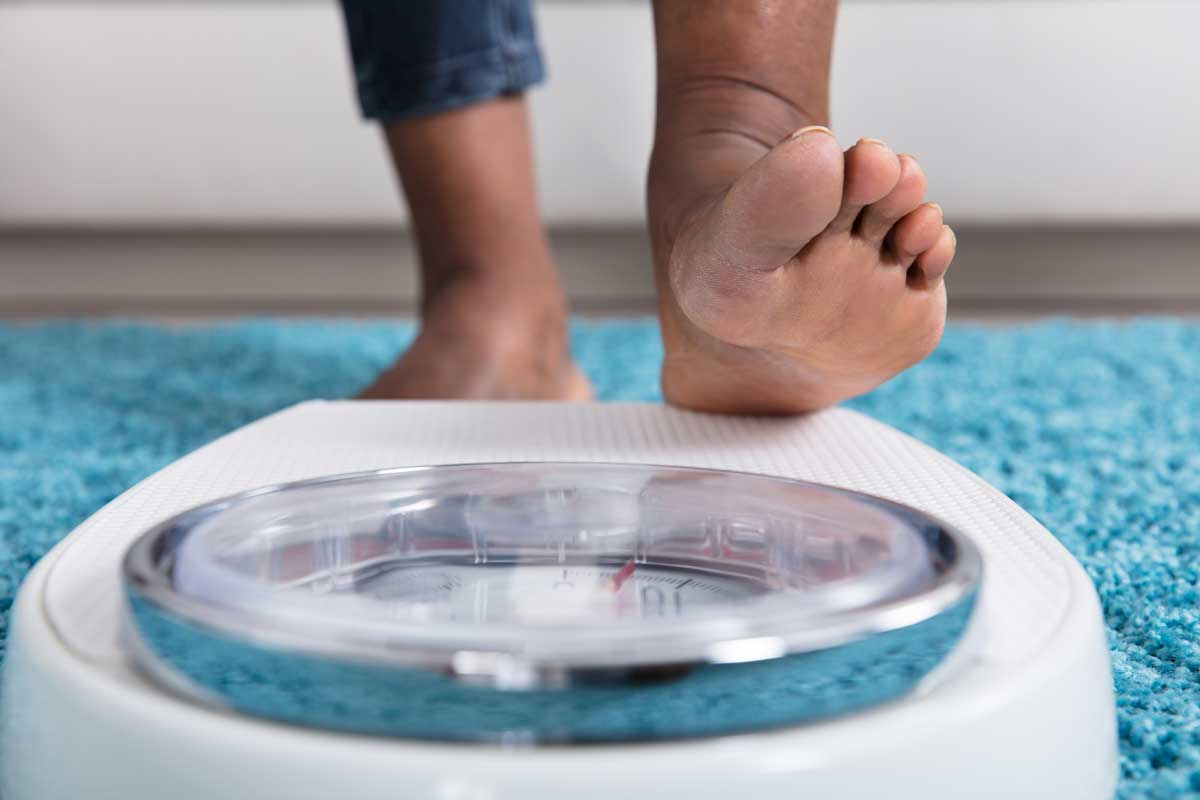Every day, more than one woman will come into my office looking to understand their perimenopausal weight gain. The exact questions vary from simply why it happens to a plea for help.
Their concerns are similar. A woman in her 40s or 50s observes that she’s gaining weight in her midsection despite no obvious changes in diet or lifestyle. The weight gain is surprising both because it’s so specific to one area of the body and because it doesn’t seem to reflect the usual causes. Often, women are worried about health implications. I remind my patients that weight and health are not one and the same.
As a physician, I believe there is value in understanding the changes we see in our bodies. As a woman in my 40s, I find it helpful to know what is coming and to be prepared. So today we are going to address why perimenopausal weight gain occurs.
This is a difficult topic for many of us. Weight and weight gain can be fraught. For many women, discussing weight gain implies judgment. We won’t be heading down that path today. We also won’t be discussing medications or diets currently used to combat perimenopausal weight gain; we will delve into the data on those topics another day.
Instead, I am going to break down the hormonal changes of menopause and explain our current understanding of how those changes lead to shifts in body composition and metabolism, based on the data.
How do our hormones change during menopause?
It is helpful to understand the changes in our hormones that occur during the normal menopausal transition. We are going to get a little technical, so bear with me.
During perimenopause we have fewer and fewer eggs in our ovaries, and the quality of those remaining eggs is typically not great. As a result, follicle-stimulating hormone (FSH) — which is made in the pituitary gland and tells the ovaries to mature an egg — rises higher and higher. When an egg is maturing, the ovaries also make estrogen.
Despite these elevations in FSH, ovulation is less frequent, leading menstrual cycles to become more irregular and less frequent. In early perimenopause, this might mean a cycle every 45 to 60 days. In late perimenopause, periods can be six months apart or more. Between these cycles, FSH is high but estrogen levels are often low. When there are no eggs left — that’s menopause — FSH continues to rise but estrogen levels remain low.
Outside of the ovary, FSH also stimulates the adrenal gland to make testosterone and several other testosterone-like hormones that we collectively call androgens. So there is a shift from high estrogen and low androgens during the reproductive years to low estrogen and high androgens in perimenopause and menopause.
Why do these hormonal changes lead to weight gain?
Estrogen is thought to directly affect whether we gain weight in our midsection. High estrogen levels — like those in younger women — prevent weight gain in the midsection and instead lead to weight gain in the tush, hips, and thighs. The drop in estrogen around menopause allows for weight gain in the midsection to occur. It also leads to a decrease in lean muscle mass.
Increased body fat and decreased muscle mass lead to a lower metabolic rate — that is the amount of energy the body uses to fuel itself at rest. If your metabolic rate decreases but your intake does not, you will experience this as weight gain.
Additionally, we know that weight gain in the abdomen around the organs is associated with higher risk for Type 2 diabetes, high cholesterol, and heart disease. However, we are just starting to understand how weight gain in the midsection impacts how our body processes carbohydrates and how that can lead to further weight gain.
More simply, the hormonal changes of perimenopause and menopause lead to weight gain. That weight gain triggers a cascade of other hormonal changes that lead to more weight gain. It is a self-reinforcing cycle.
To add fuel to the fire, an increase in central weight gain is associated with a decrease in physical activity, which in turn leads to more weight gain. The data suggest that when we gain weight in our midsection, we also move less.
In the past five years, research in animals suggests that FSH itself plays a role in perimenopausal weight gain. This may explain why hormone replacement therapy (HRT) does not lead to weight loss. When we take HRT, estrogen levels increase but FSH levels don’t significantly change. We don’t fully understand this relationship, but it is an ongoing area of research.
What changes in body composition can we expect?
Most of what we know about the typical changes of menopause come from a few longitudinal studies that follow women through the menopausal transition and collect tons of data at different points in time during perimenopause and menopause. One such study is the Study of Women’s Health Across the Nation (SWAN).
Data from a subset of the SWAN study that includes 563 women allows us to focus on the five years before and after the last menstrual period. During this 10-year period, participants gained an average of 4.7 kilograms (10.3 pounds, or 14%) in fat. Waist circumference increased 8.9 centimeters (3.5 inches, or 10%) among the participants. Waist circumference seemed to level off two to three years into menopause, but weight continued to increase steadily. Muscle mass decreased by a modest 0.23 kilograms (0.5 pounds, or 1%).
A focus on health
If you are like me, your biggest concern when it comes to weight gain is staying healthy. We want to avoid chronic diseases like Type 2 diabetes and high blood pressure because they can lead to decreased quality of life and decreased longevity. I want to live as long as I can, as well as I can. You probably do too.
With that goal in mind, I consider weight just one measure of health. Other measures, such as blood pressure, cholesterol, liver tests, and blood sugar, should be considered together with weight to assess our health risks.
If these metabolic measurements are normal, work to keep them that way. If not, focus your efforts on improving those measurements — rather than decreasing the number on the scale — with a healthy diet; exercise, including strength training; and, if needed, medications.
Our bodies will change during perimenopause — just like they changed during puberty and pregnancy — but I hope you’ll join me in approaching that change with a goal of maintaining strength and fitness, so we can all enjoy a long, active, and healthy menopause.
















Log in